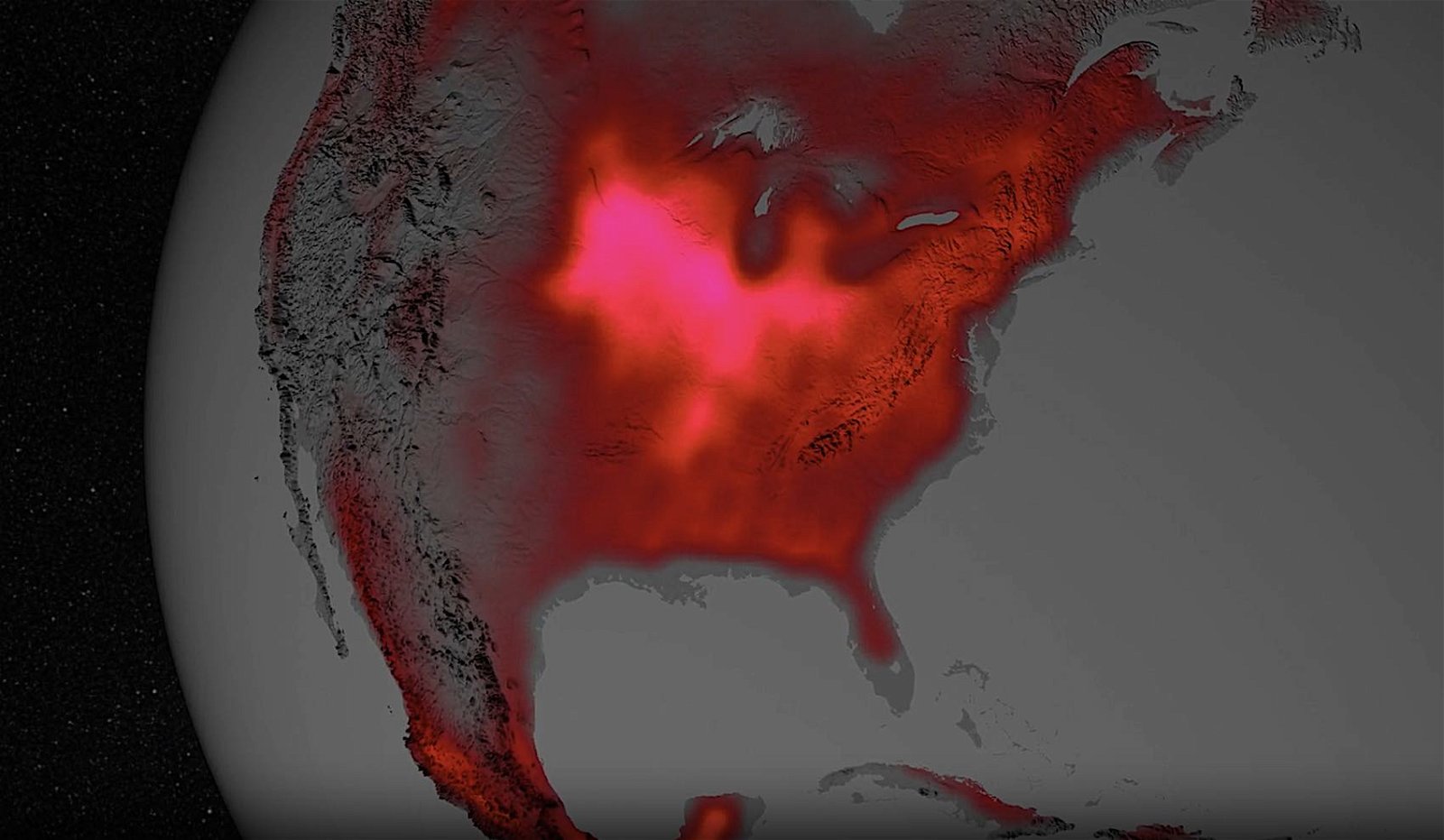More than a decade ago, severe flash droughts besieged parts of the United States on a scale not seen since the Dust Bowl of the 1930s. Over $30 billion in losses resulted, but now scientists are leveraging satellite technology to develop a remarkable method of helping provide early warning signs for such conditions before they occur.
According to scientists at NASA’s Jet Propulsion Laboratory, a form of light produced by plants during photosynthesis could potentially offer a breakthrough in predicting devastating droughts before they strike. Known as solar-induced fluorescence (SIF), this unique “glow” produced by plants is invisible to the human eye but can be easily detected by sensitive instruments aboard satellites like NASA’s Orbiting Carbon Observatory-2 (OCO-2).
Analyzing several years of fluorescence data, JPL scientists were able to link the appearance of SIF to past flash droughts. This seemingly indicates that plants underwent periods of increased productivity, resulting in fluorescence blooms that appeared before severe soil water loss occurred during drought periods.
NASA’s OCO-2 satellite can observe fluorescence patterns throughout regions of widespread farmland, such as the midwestern United States. By combining fluorescence measurements with soil moisture data from another NASA satellite, the aptly named Soil Moisture Active Passive (SMAP) satellite, which observes and measures natural microwave emissions from Earth, correlations in the data provide a highly accurate method of anticipating soil moisture levels. This allows researchers to determine when an oncoming drought is likely as much as several weeks before it occurs.
The implications of this technology mark a potential breakthrough in the ability to provide advance warning to farmers and others in the agriculture and livestock industries, whereby adjustments to water usage and irrigation systems can be made, in addition to focusing on growing crops that are more likely to thrive under arid conditions.
Additionally, with the rise in unpredictable climate conditions that are increasingly facilitating sudden changes in weather, having foreknowledge that could help to offset the negative effects of such volatile weather could be invaluable in the years ahead.
In a recent study detailing the team’s findings, Nicholas Parazoo and co-authors report that “spaceborne observations of solar-induced fluorescence (SIF) provide a reliable indicator of flash droughts at lead times of 2–3 months” and that their findings are “expected to improve understanding of flash drought impacts on carbon exchange and facilitate flash drought early warning.”
Notably, Parazoo and his colleagues studied the impact flash droughts have on carbon emissions. Since plants function as significant natural carbon sinks by absorbing more CO2 than they produce, the team’s findings convey that increased carbon uptake in advance of dry periods may help to offset the reduced absorption that occurs once droughts are underway.
Striking a balance between plant carbon uptake and the onset of droughts could prove crucial for improving the carbon cycle models researchers rely on to understand and manage climate changes over time.
The team says that further research is still required to understand the link between SIF and weather conditions that lead to droughts, particularly in relation to their timing, magnitude, and duration. Additionally, the team emphasizes the need for collaboration between drought forecasting agencies and researchers and that parallel efforts that leverage SIF to provide near real-time data on drought conditions could be aided in part through the “development of wide swath satellite sensors capable of producing spatially resolved maps of SIF at high frequency.”
With the OCO-2 satellite celebrating a decade in orbit, NASA says its mission to map CO2 concentrations and observe the growth and conditions of plants amid volatile weather systems is becoming increasingly vital. Such capabilities help to arm scientists with important information about ecological patterns, which thereby enhances our ability to predict and respond to environmental crises when they occur.
Parazoo and his colleagues Mahmoud Osman, Madeleine Pascolini-Campbell, and Brendan Byrne published their recent paper, “Antecedent Conditions Mitigate Carbon Loss During Flash Drought Events,” in Geophysical Research Letters. Additional information can be found at the JPL website.
Micah Hanks is the Editor-in-Chief and Co-Founder of The Debrief. He can be reached by email at micah@thedebrief.org. Follow his work at micahhanks.com and on X: @MicahHanks.

